When people talk about social media, it is usually presented in a bad light. It makes us feelmore insecure, it messes up ourattention spans, and it makes us drop our goals for that sweetinstant gratification. To put it simply, it is bad in many different proven ways.However, there are some good things about it, too. One of them is the fact that it provides easy access to information. If we curate our social media feeds responsibly, we can learn from scrolling on our phones.One such account that is dedicated to spreading knowledge on the internet isDaily Historianon Instagram. There, you will find not only funny memes and pictures but also interesting stories from our history. Scroll down to read our favorite ones.This post may includeaffiliate links.
When people talk about social media, it is usually presented in a bad light. It makes us feelmore insecure, it messes up ourattention spans, and it makes us drop our goals for that sweetinstant gratification. To put it simply, it is bad in many different proven ways.
However, there are some good things about it, too. One of them is the fact that it provides easy access to information. If we curate our social media feeds responsibly, we can learn from scrolling on our phones.
One such account that is dedicated to spreading knowledge on the internet isDaily Historianon Instagram. There, you will find not only funny memes and pictures but also interesting stories from our history. Scroll down to read our favorite ones.
This post may includeaffiliate links.
The B.C. and A.D. system is a dating system used to label or number years in the Gregorian and Julian calendars. B.C. stands for “Before Christ,” referring to the time before the birth of Jesus Christ, while A.D. stands for “Anno Domini,” a Latin phrase meaning “in the year of our Lord,” referring to the time after the birth of Jesus Christ. However, it is important to note that scholars later determined that Jesus was born around 6–4 B.C., not A.D. 1. The B.C. and A.D. dating system was not taught in the Bible and was not fully implemented and accepted until several centuries after Jesus' death. B.C.E. and C.E. are alternative dating systems that have gained popularity in recent times. B.C.E. stands for “Before Common Era,” and C.E. stands for “Common Era.” These terms are equivalent to B.C. and A.D., respectively, but they remove the explicit reference to Christ, making them more inclusive and sensitive to non-Christian beliefs. The use of B.C.E. and C.E. dating system first appeared in the 17th century in German and in the 18th century in English. Today, the use of B.C.E. and C.E. has become fairly common among other groups for similar reasons.

Informational social media accounts might be perceived as simply entertaining and not really having a lasting value, but they do offer us an opportunity at microlearning.Microlearning is an educational approach that encourages people to learn things in small, focused portions. This type of approach not only increasesinformation retention, but also helps studentsbuild confidencein their knowledge.
Informational social media accounts might be perceived as simply entertaining and not really having a lasting value, but they do offer us an opportunity at microlearning.
Microlearning is an educational approach that encourages people to learn things in small, focused portions. This type of approach not only increasesinformation retention, but also helps studentsbuild confidencein their knowledge.
In 1254, Möngke Khan, the grandson of Genghis Khan, hosted a religious debate between Christian, Muslim, and Buddhist theologians. Möngke Khan was known for his religious pluralism and had a keen interest in learning about different religions. The debate was organized similarly to wrestling matches, with a panel of judges overseeing it, including a Christian, a Muslim, and a Buddhist. A large audience gathered to watch the event, which began with great seriousness and formality. The debate covered various topics such as evil versus good, God’s nature, the fate of animal souls, the existence of reincarnation, and whether God created evil. The clerics formed shifting coalitions among the different religions according to the topic being discussed. Between each round of the debate, the participants were required to drink alcohol as well. This led to the debaters becoming increasingly intoxicated, and ending with the Buddhists sitting silently while the Christian and Muslim debaters sang loudly at each other.

Historical empathy refers to the ability to understand and appreciate the thoughts, feelings, and experiences of people from different historical periods and cultures. It involves setting aside our own personal opinions and judgments to better comprehend the motivations, beliefs, and actions of individuals or groups in the past. As someone who studied history as an undergrad, this skill is essential for students of the field. It allows them to engage in historical inquiry and develop a deeper understanding of historical contexts. Historical empathy is not about feeling sorry for historical figures or sympathizing with their points of view. Instead, it is an attempt to understand their perspectives and the reasons behind their actions. This process involves two main components: historical contextualization and perspective-taking. Historical contextualization involves situating events and people within their broader historical context, while perspective-taking requires understanding the mentality, beliefs, values, and intentions of historical agents. In the classroom, historical empathy can be used to help students engage with history and process their own roles in the world today. By understanding people in the past and contextualizing their actions, students can better comprehend how the past has shaped the present and consider the impact of their choices on their own lives and communities.

Al Capone, the infamous American gangster, is often credited with popularizing expiration dates on milk bottles in the 1930s. The story goes that one of Capone’s family members got sick after drinking expired milk, which led Capone to take an interest in the milk industry. He bought a milk processor called Meadowmoor Dairies and lobbied the Chicago City Council to pass a law requiring visible date stamps on milk containers. However, there are alternative theories about Capone’s involvement in the milk industry. Some reports suggest that he was looking for a legitimate business to fund his lifestyle after the end of Prohibition. It is believed that all stamping equipment for milk expiration dates was under his control, and after Chicago passed the law mandating visible expiration dates on milk bottles, Capone had the ability to effectively control the local milk market.

During the D-Day landings in June 1944, the captain of the USS Texas intentionally flooded the ship’s hull to achieve a specific goal. The Allied forces had advanced inland, and the battleship’s guns couldn’t aim high enough to reach their intended targets due to insufficient elevation. To overcome this limitation, the crew flooded the starboard torpedo blister, a sponson on the hull below the waterline, causing the ship to list two degrees to starboard. This additional angle allowed the battleship’s guns to fire accurately and complete the mission, providing crucial support to the invasion forces. This daring move was unconventional, but it demonstrated the spirit of the Allied forces during the Normandy operation and contributed to the overall success of the invasion.

Henry Avery was an English pirate who operated in the Atlantic and Indian Oceans in the mid-1690s. He was born around 1653 in Cattedown, Plymouth, England. Avery began his career at sea, following in his father’s footsteps, and eventually joined the Royal Navy, serving as a midshipman on the HMS Kent and HMS Rupert. Avery’s pirate career started when he was the first mate aboard the warship Charles II. The crew mutinied due to unpaid wages and Avery was elected captain of the newly renamed pirate ship, the Fancy. In 1695, Avery and his crew captured a treasure ship of the Mughal emperor, which carried cargo worth over $95 million today. This heist made Avery one of the most successful pirates in history and earned him the nickname “Long Ben”. His exploits captured the public’s imagination, inspired others to take up piracy, and spawned works of literature. Despite the large bounties offered for his capture, Avery managed to evade arrest and was never caught. His ultimate fate remains a mystery, with some legends suggesting that he lost his fortune to unscrupulous merchants and died in poverty in England. Others believe he made a clean getaway and retired with his loot. Regardless of his fate, Henry Avery remains one of the most notorious and successful pirates in history.

Another feature is that it often uses different forms of multimedia to convey the message. This can be a short-form video, a picture, a quiz, or a game. This enhances the learning experience, making it more fun and engaging. The entertainment aspect helps learners to better retain the information.



A big part of microlearning is how flexible it is. You do not need to follow a specific timeline for learning. You learn at your own pace as long as you have a device that allows you to access the information.


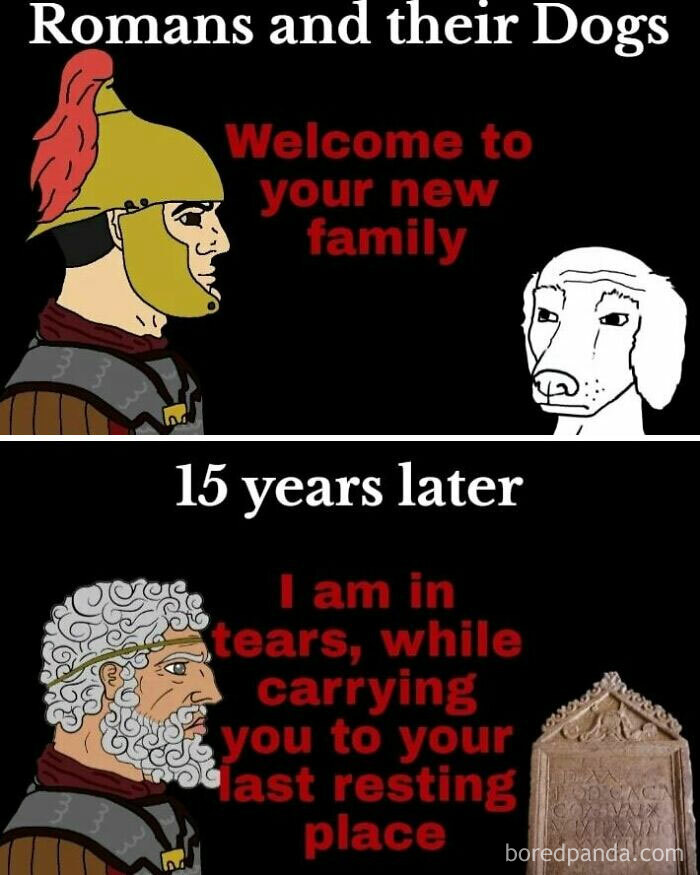
A good example of microlearning can be a science-oriented TikTok or YouTube page, like one thatHank Greenhas. Apps like Duolingo are also considered microlearning tools as they gamify language learning. You could also consider checking out a ‘word’ or ‘fact of the day’ as a type of microlearning. Which is why informational social media accounts are up there, too.


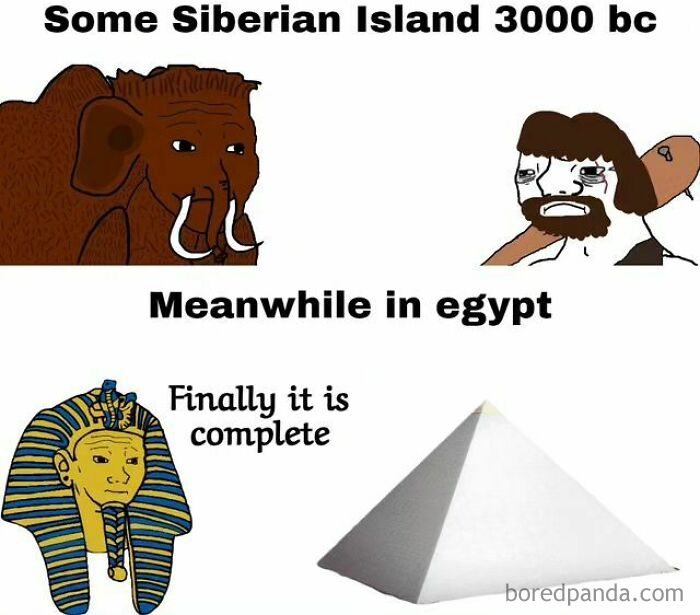
All of that to say that we are learning all the time, taking in information from our surroundings. Choosing to subscribe to informational content is a step towards more knowledge. Just remember to carefully curate what you read and only listen to reliable information.
The Argentine Poodle Incident refers to a tragic event that occurred on October 21, 1988, in Buenos Aires, Argentina. A poodle named Cachi fell from a 13th-floor balcony and landed on a 75-year-old woman named Marta Espina, king both the woman and the dog instantly. The incident led to two more deaths. A second woman was ked after a bus hit her as she came to see what had happened. An unidentified man who witnessed the second woman’s death had a heart attack and died on the way to the hospital. The incident began when Cachi was playing with a tennis ball in the Montoya family’s apartment. The ball bounced too far, and Cachi chased it onto the balcony, eventually falling through the railings to the street below.

The Aztecs followed the Spanish around with incense burners when they arrived in Mexico. The Spaniards believed this to be a divine honor, but it was actually a necessity due to the wide gap in hygiene between the two peoples. The Aztecs used a variety of deodorants, including flowers and oils, whereas incense was used in different ritual contexts. The Spaniards' smell was so unbearable to the Aztecs that they used their ritual incense to mask it. The Aztecs were known for their cleanliness and personal hygiene, and they bathed often, and many of them every day in the rivers, lakes, or pools. The Spaniards' hygiene was poor, and they were unable to stay clean in the conditions they were in.
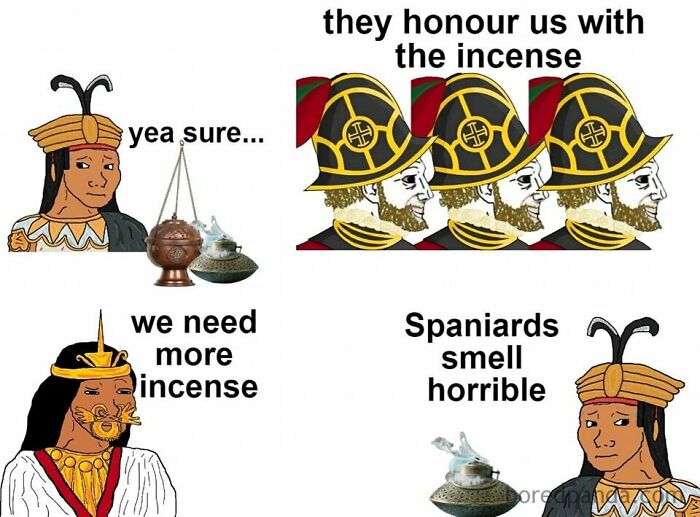

The British and French were the first to develop tanks in World War I, with the goal of creating armored vehicles capable of crossing trenches, breaking through barbed wire, and providing protection for infantry. The first tank used in battle was the British Mark I, which made its debut during the Battle of the Somme in September 1916. The Mark I was a large, slow-moving vehicle with a rhomboidal shape, designed to cross trenches and crush barbed wire. It was armed with machine guns and/or cannons, depending on the variant. Although the Mark I had a dramatic effect on German morale and proved effective in crossing trenches and wire entanglements, it failed to break through the German lines. The French also developed tanks during World War I, with the first model being the CA 1. Later in the war, the French car company Renault produced the Renault FT, which became a more successful design. The German army also began to develop their own tanks as the war progressed. Early tanks faced several challenges, including slow speed, mechanical malfunctions, and vulnerability to enemy fire. Despite these issues, tanks played a significant role in World War I and contributed to the development of modern armored warfare.

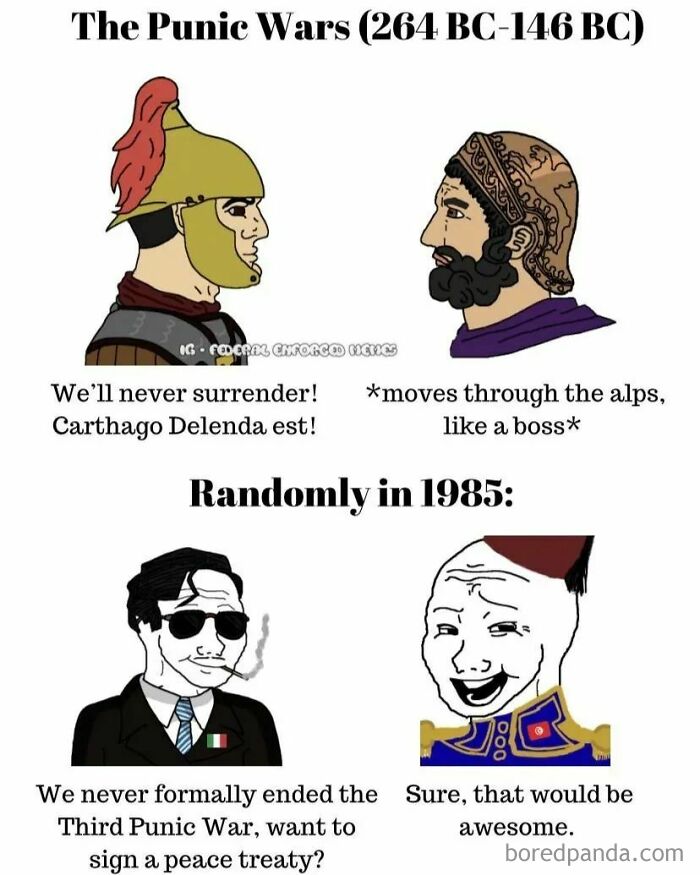
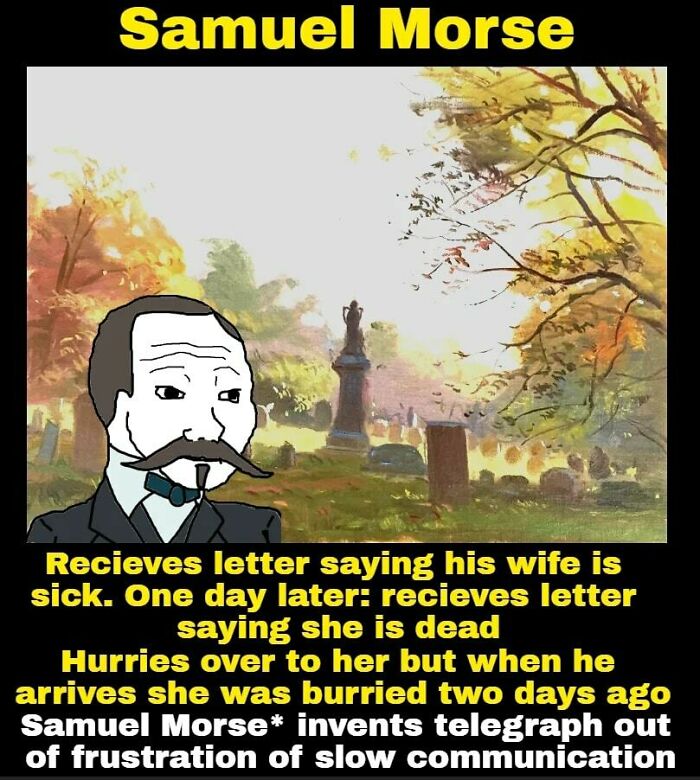



Some Medieval maps used dragons to indicate unknown or dangerous areas as a way to represent the uncharted territories and the potential dangers that explorers might encounter. This practice is thought to be rooted in the Christian tradition, where dragons were associated with evil and Satan. Examples of dragons on historical maps include: -The Fra Mauro Map (c. 1450 AD): This map shows the “Island of Dragons” (Italian: Isola de' dragoni), an imaginary island in the Atlantic Ocean. Near Herat in modern-day Afghanistan, the map mentions dragons with stones in their foreheads that cure infirmities. -The T-O Psalter map (c. 1250 AD): This map features dragons as symbols of sin in a lower frame below the world, balancing Jesus and angels on the top. However, the dragons do not appear on the map proper. -The Borgia map (c. 1450 AD): A world map engraved on a metal plate, featuring a drawing of a dragon on its peripheral near the area that depicts Asia.
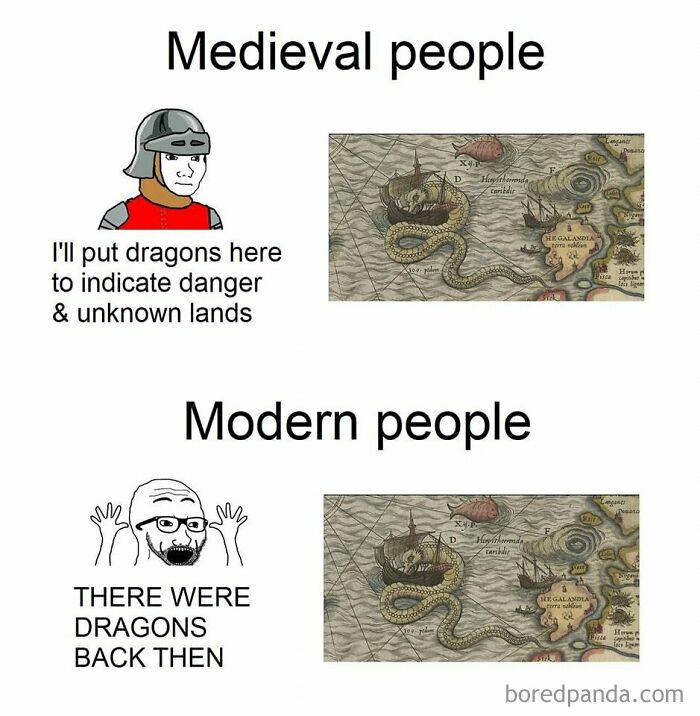


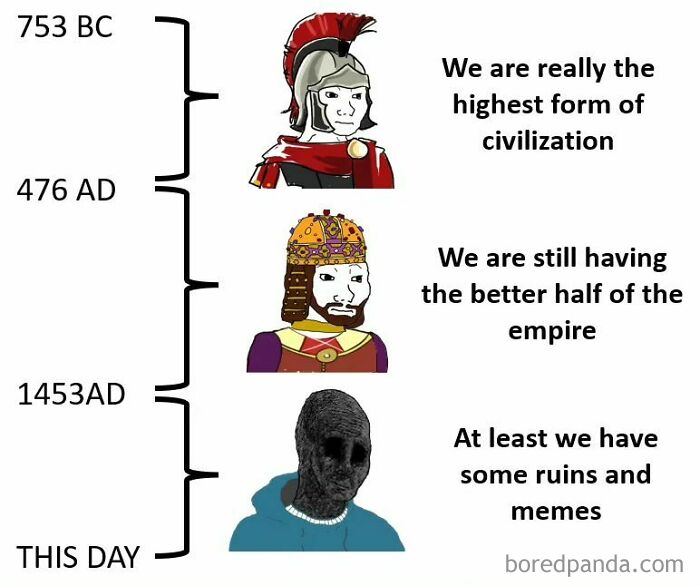
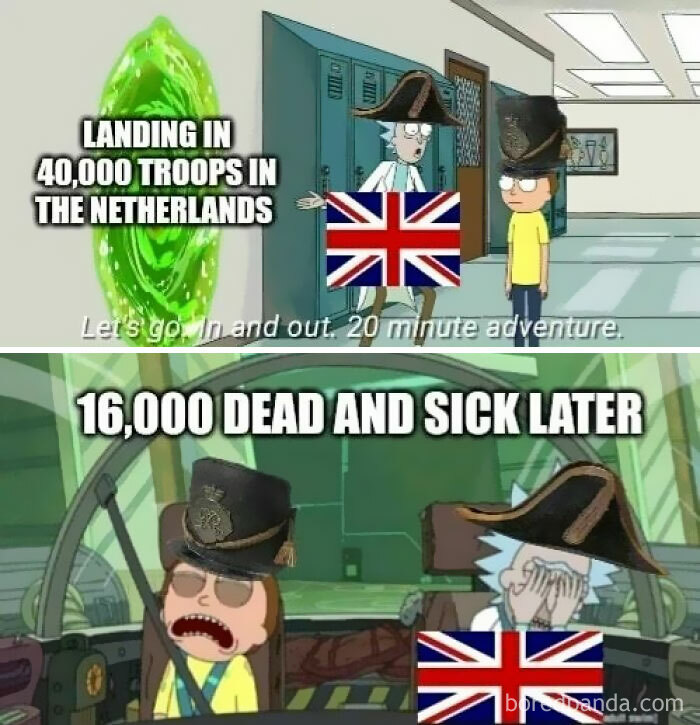
The War of the Triple Alliance, also known as the Paraguayan War, was a South American conflict that took place from 1864 to 1870. It was fought between Paraguay and the Triple Alliance, which consisted of Argentina, the Empire of Brazil, and Uruguay. The war was the deadliest and bloodiest inter-state conflict in Latin American history. The war began when Paraguayan dictator Francisco Solano López perceived a threat to the regional balance of power after Brazil helped the leader of Uruguay’s Colorado Party oust his Blanco Party opponent. In response, López, who had built up a 50,000-man army (the strongest in Latin America at the time), went to war with Brazil. Argentina’s president, Bartolomé Mitre, then organized an alliance with Brazil and Colorado-controlled Uruguay, forming the Triple Alliance, and together they declared war on Paraguay on May 1, 1865. Despite having a much smaller army compared to the combined forces of the Triple Alliance, Paraguay managed to hold off its enemies for two years. In 1868, Brazil eliminated the Paraguayan army, k***ing, maiming, or capturing more than 10% of Paraguay’s population.

Continue reading with Bored Panda PremiumUnlimited contentAd-free browsingDark modeSubscribe nowAlready a subscriber?Sign In
Continue reading with Bored Panda Premium
Unlimited contentAd-free browsingDark mode
Unlimited content
Ad-free browsing
Dark mode
Subscribe nowAlready a subscriber?Sign In

See Also on Bored Panda
During the Vietnam War, the 101st Airborne Division of the United States Army had a bald eagle patch on their uniforms. The North Vietnamese Army referred to the 101st Airborne soldiers as “chicken men” because of this insignia. The reason for this nickname is that there are no eagles in Vietnam, so the Vietnamese soldiers did not recognize the bald eagle on the patch and mistook it for a chicken. This misunderstanding led to the nickname “chicken men” for the 101st Airborne soldiers.


Paul Emil von Lettow-Vorbeck, often referred to as the Lion of Africa, was a general in the Imperial German Army and the commander of its forces in the German East Africa campaign during World War I. Born into the Pomeranian minor nobility, he was educated in boarding schools in Berlin and joined the cadet corps at Potsdam and Berlin-Lichterfelde. He gained experience in bush fighting during the Herero and Hottentot rebellion (1904–07) in German South West Africa (now Namibia). When World War I broke out, Lettow-Vorbeck was appointed the military commander of German East Africa. Despite being outnumbered, he skillfully defended German East Africa with determination and courage. His troops consisted of never more than 3000 Germans and a larger number of local Askari soldiers. He repelled a British landing at Tanga (Tanzania) in November 1914. Throughout the war, he successfully ran a four-year guerrilla campaign against a much larger British force, inflicting many casualties and avoiding defeat. Lettow-Vorbeck’s tactics were unconventional for the time. He used guerrilla warfare strategies, which were not common in regular forces at the time. His ability to evade a much larger Entente force and his successful invasion of British territory made him a celebrated figure in Germany. Lettow-Vorbeck’s campaign in East Africa did not end with the armistice in Europe. He only surrendered 14 days after the end of the war in Europe, making him the last German commander to capitulate. Upon his return to Germany in January 1919, he was welcomed as a hero. His reputation as an undefeated war hero earned him many honors over the following years.





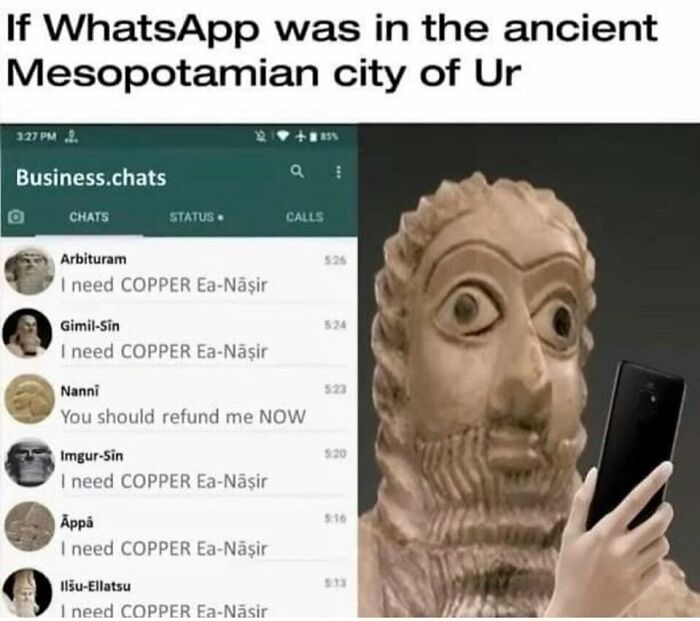






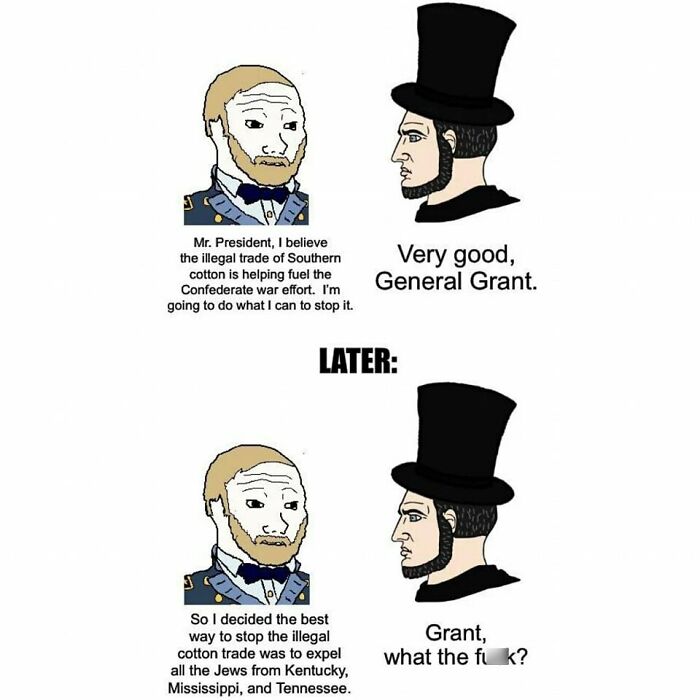
Nomads are people who have no permanent abode and travel from place to place to find fresh pasture for their livestock. The Eurasian nomads were a large group of peoples from the Eurasian Steppe who domesticated the horse around 3500 BCE, vastly increasing the possibilities of nomadic life. Their economy and culture emphasized horse breeding, horse riding, and nomadic pastoralism. They traveled with their animals, which grazed along the way, and moved to new locations where the herbage had not yet been eaten down. They relied on horses for food in the summer months when ewes and cows stopped giving milk. Steppe nomads on the move ate and drank when they could, and often subsisted for weeks at a time on nothing but horse blood and mare’s milk. Herders kept and trained fierce dogs to protect the herds from such predators.
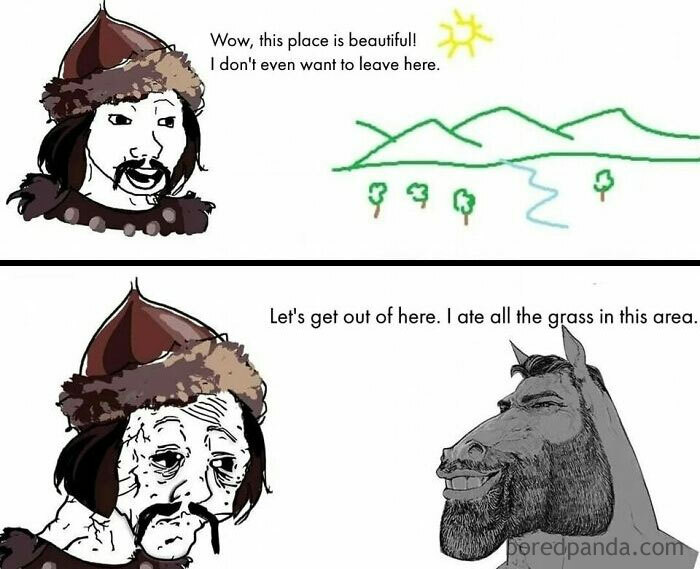
In the 19th century, British Columbia was a British colony located on the western coast of North America. At that time, the Canadian Confederation was being formed, and the leaders of the colonies that would become Canada were interested in expanding their territory and creating a transcontinental nation. British Columbia was geographically isolated from the eastern provinces of Canada, and there was a growing concern about potential American expansionism in the region. The leaders in British Columbia recognized the benefits of joining Canada, as it would provide economic stability, security, and access to a larger market. Negotiations between British Columbia and the Canadian government took place, and one of the crucial factors discussed was the construction of a railway connecting the province to the rest of Canada. The Canadian government promised to build a transcontinental railway, known as the Canadian Pacific Railway (CPR), to link British Columbia with the eastern provinces. The completion of the railway had significant impacts on British Columbia’s development. It facilitated trade and transportation, allowing for the movement of goods, people, and resources across the country. It also led to increased settlement and economic growth in the province.

Antoine Lavoisier, a renowned French chemist known for his significant contributions to the field of chemistry, including the discovery of hydrogen and the implementation of the metric system. He was executed on May 8, 1794, during the Reign of Terror following the French Revolution. He was found guilty of fraud and was one of 28 people executed at that time. Lavoisier’s execution was a result of the radicalization of the French Revolution and the subsequent Reign of Terror. Despite his contributions to science and his efforts to advise the Revolutionary governments on finance and other matters, Lavoisier found himself imprisoned along with other members of the General Farm, a group of tax collectors. The Republic was purging itself of its royalist past, and Lavoisier, his father-in-law, and 26 other Tax Farmers were guillotined. Intriguingly, Lavoisier is also known for a peculiar experiment he conducted at the time of his execution. As a scientist, he was naturally curious about what happens to the human head once it was removed from the torso. Therefore, he promised that he would blink for as long as possible when he was beheaded. There were some reports that he blinked for up to 30 seconds, suggesting that the brain might continue to function even though it is no longer attached to the rest of the body. However, the validity of this experiment is disputed due to the circumstances of his execution, with some sources suggesting that there would have been no time to perform any such observation.
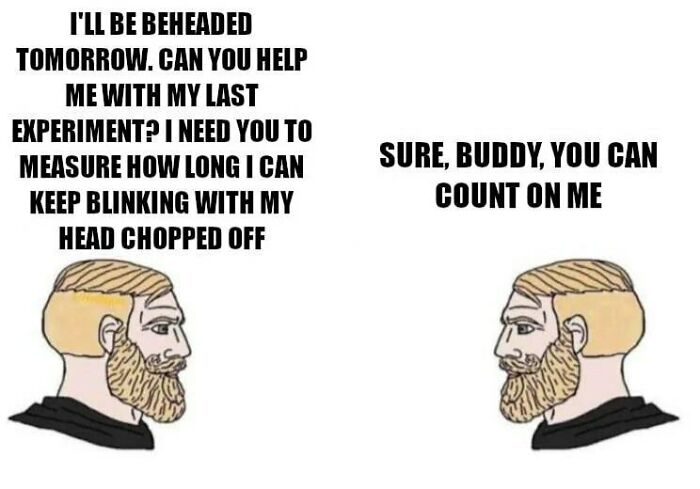



Canada gained its independence gradually through a series of constitutional and legislative changes over the course of several decades. The country began as a British colony in 1763 after the Seven Years War, and over time, it developed a distinct cultural and political identity. The road to independence was a long one, and it was not until 1982 that Canada gained full control over its constitution. In 1867, Canada became a self-governing dominion within the British Empire, with a federal system of government modeled on the British parliamentary system. This gave Canada a significant degree of autonomy, including control over internal affairs and the power to negotiate its own treaties and alliances. However, Canada remained tied to Britain in matters of foreign policy, defense, and international trade. Throughout the 20th century, Canada gradually gained more control over its own affairs, including greater autonomy in foreign policy and defense. In 1931, the Statute of Westminster granted Canada full legal autonomy in domestic and foreign affairs, and in 1949, Canada became a member of the North Atlantic Treaty Organization (NATO) as an independent nation. The final step towards full independence came in 1982, with the adoption of the Canadian Charter of Rights and Freedoms, which gave Canada complete control over its own constitution and legal system. Today, Canada is a fully independent nation with a unique identity that reflects its history, culture, and geography. It is a bilingual, multicultural country that is known for its commitment to human rights, democracy, and the rule of law.


The 1950 British Columbia B-36 crash occurred on February 14, 1950, when a Convair B-36B bomber (United States Air Force Serial Number 44-92075) assigned to the US 7th Bombardment Wing, Heavy at Carswell Air Force Base in Texas, crashed in northwestern British Columbia on Mount Kologet after jettisoning a Mark 4 nuclear bomb[3]. This was the first recorded loss of a nuclear weapon in history. The B-36B was en route from Eielson Air Force Base near Fairbanks, Alaska, to Carswell AFB, more than 3,000 miles southeast, on a mission that included a simulated nuclear attack on San Francisco. After six hours of flight, the aircraft developed serious mechanical difficulties, forcing the crew to shut down three engines. Icing conditions complicated the emergency, and level flight could not be maintained. The aircraft headed out over the Pacific Ocean and dropped the weapon from 8,000 feet. The crew then flew the aircraft over Princess Royal Island, where they bailed out. The wreckage was later found on Vancouver Island. Sixteen crewmen and one passenger parachuted safely and were rescued. The abandoned B-36 cruised for another 200 miles, veering from its set course, and crashed into the snowy flank of Mount Kologet, deep in the inland Canadian wilderness. In 1954, a small demolition crew reached the downed B-36 and proceeded to strip the plane of any classified equipment and destroy it.





Oliver Cromwell, born on April 25, 1599, in Huntingdon, England, was a prominent figure in English history. Known for his pivotal role in the English Civil War and subsequent establishment of the Commonwealth of England, Cromwell left an indelible mark on the nation’s history. Raised in a middle-class family, he received a solid education and eventually became a Member of Parliament. Cromwell’s rise to power began during the English Civil War, which erupted in 1642. As a skilled military leader, he commanded the Parliamentarian forces, known as the Roundheads, against the Royalists loyal to King Charles I. Cromwell’s tactical brilliance and disciplined army led to a series of victories, culminating in the defeat and execution of Charles I in 1649. Subsequently, Cromwell emerged as the de facto ruler of England. During his tenure as Lord Protector, Cromwell implemented significant political and religious reforms. He established a republican government, dissolved the monarchy, and promoted religious tolerance. However, his rule was not without controversy. Cromwell faced criticism for his suppression of dissent and strict moral codes, particularly in his attempts to control social and cultural aspects of English society.

Modal closeAdd New ImageModal closeAdd Your Photo To This ListPlease use high-res photos without watermarksOoops! Your image is too large, maximum file size is 8 MB.Not your original work?Add sourcePublish
Modal close
Add New ImageModal closeAdd Your Photo To This ListPlease use high-res photos without watermarksOoops! Your image is too large, maximum file size is 8 MB.Not your original work?Add sourcePublish
Modal closeAdd Your Photo To This ListPlease use high-res photos without watermarksOoops! Your image is too large, maximum file size is 8 MB.Not your original work?Add sourcePublish
Add Your Photo To This ListPlease use high-res photos without watermarksOoops! Your image is too large, maximum file size is 8 MB.
Add Your Photo To This List
Please use high-res photos without watermarks
Ooops! Your image is too large, maximum file size is 8 MB.
Not your original work?Add source
Modal closeModal closeOoops! Your image is too large, maximum file size is 8 MB.UploadUploadError occurred when generating embed. Please check link and try again.TwitterRender conversationUse html versionGenerate not embedded versionAdd watermarkInstagramShow Image OnlyHide CaptionCropAdd watermarkFacebookShow Image OnlyAdd watermarkChangeSourceTitleUpdateAdd Image
Modal closeOoops! Your image is too large, maximum file size is 8 MB.UploadUploadError occurred when generating embed. Please check link and try again.TwitterRender conversationUse html versionGenerate not embedded versionAdd watermarkInstagramShow Image OnlyHide CaptionCropAdd watermarkFacebookShow Image OnlyAdd watermarkChangeSourceTitleUpdateAdd Image
Upload
UploadError occurred when generating embed. Please check link and try again.TwitterRender conversationUse html versionGenerate not embedded versionAdd watermarkInstagramShow Image OnlyHide CaptionCropAdd watermarkFacebookShow Image OnlyAdd watermark
Error occurred when generating embed. Please check link and try again.
TwitterRender conversationUse html versionGenerate not embedded versionAdd watermark
InstagramShow Image OnlyHide CaptionCropAdd watermark
FacebookShow Image OnlyAdd watermark
ChangeSourceTitle
You May Like30 Intriguing True Stories From The Past Few Know AboutViktorija Ošikaitė203 History Trivia Questions To Remind You Of High SchoolEligijus Sinkunas50 Ancient Artefacts That Prove The Past Was More Advanced Than We Ever ImaginedJonas Zvilius
Viktorija Ošikaitė
Eligijus Sinkunas
Jonas Zvilius
History